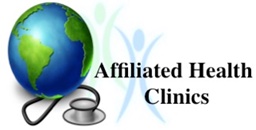

Osteopathic Manipulative Treatment
Physicians who are trained in osteopathic manipulative treatment (OMT) can apply a variety of hands-on methods for diagnosing and treating certain musculoskeletal conditions as well as some other common conditions ranging from asthma and migraines to sinus problems, carpal tunnel syndrome and more. This form of therapy can help increase a patient’s flexibility, mobility and energy while temporarily reducing pain in the joints, muscles and elsewhere in the body. Here, the physician applies gentle pressure, stretching and resistance to problematic areas using his or her own hands. The methods applied in OMT are often used in combination with – or as alternatives to – other forms of treatment such as medication and surgery.
Osteopathic Manipulative Therapy Techniques
There are dozens of OMT techniques, each designed to help with different types of pain, stiffness, tightness, illness or injury. Osteopathic physicians at Affiliated Health Clinics are experts in the full range of these techniques. Some of the most commonly used are:
- • Craniosacral therapy, in which your doctor uses gentle pressure to relieve tension in your head, neck and back
- • Lymphatic pump techniques, in which your doctor uses quick pumping motions to rhythmically move different parts of your body
- • Massage techniques, including effleurage (light, gentle strokes) and petrissage (deeper strokes, like kneading bread)
- • Muscle energy technique, in which you push against light resistance and then your doctor stretches your muscles
- • Myofascial release, a special kind of massage designed to relieve pain in the connective tissue around your muscles (called myofascia)
- • Soft tissue release, in which your doctor applies pressure to, and then stretches, different parts of your body
- • Spinal mobilization, in which your doctor applies pressure to your spine in ways that help increase your range of motion
- • Strain-counterstrain, in which your doctor gently moves your stained, spasming or painful muscles to a more comfortable position
Your treatment plan will be based on your specific needs and preferences. Every patient is different, but most treatment plans fall into the following ranges:
- • Most people need between two and five sessions of OMT
- • Sessions are usually one or two months apart
- • Most sessions last between 30 minutes and one hour
- • Your doctor will use OMT techniques on different parts of your body, not only the problem area. That’s because OMT is based on the idea that your body’s systems are all connected. The cause of the problem might not be located in the area where you’re feeling symptoms.
- • They’ll explain what they’re doing each step of the way. They’ll always ask before touching sensitive areas. (And you can always have someone else in the room with you if you’d like.)
- • After treatment, you may feel a bit tired or sore for a day or so. You may also have a sense of emotional release, especially if you have a history of trauma.
- • You can return to your normal activities the day after treatment. We generally recommend drinking plenty of water afterward.
• Asthma
• Back Pain
• Carpal Tunnel Syndrome
• Constipation
• Chronic Obstructive Pulmonary Disease (COPD)
• Chronic Pain
• Fibromyalgia
• Foot Pain
• Frozen Shoulder
• Golfer’s Elbow
• Headaches
• Irritable Bowel Syndrome (IBS)
• IT Band Syndrome
• Migraines
• Narrow Palate
• Neck Pain
• Patellofemoral Pain Syndrome
• Pelvic Pain
• Plantar Fasciitis
• Post-Concussion Syndrome
• Post-Surgical Pain
• Rotator Cuff Tears
• Sacroiliac (SI) Joint Pain
• Sciatica
• Sleep Problems
How is OMT Different From Going to a Chiropractor?
People often wonder how getting OMT is different from going to a chiropractor. Both kinds of treatment use touch, movement, massage and other techniques to help the body heal. But OMT is different in some important ways:
- • You always get OMT from an osteopathic doctor (DO). DOs are doctors who have gone through medical school, residency and other advanced training. At Affiliated Health Clinics, you’ll get OMT from a DO with advanced training in physical medicine and rehabilitation and osteopathic neuromusculoskeletal medicine. This gives them a deep understanding of the connections between your brain, nerves, bones, muscles and connective tissues.
- • OMT can be easily combined with other treatments. For example, maybe you would also benefit from physical therapy, occupational therapy, speech and swallowing therapy, medications or other treatments. As a doctor who can prescribe these other treatments, your DO can direct a whole treatment plan if necessary.